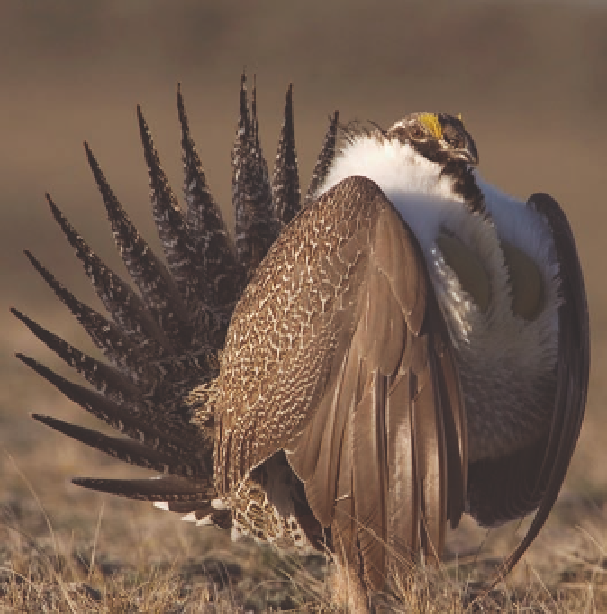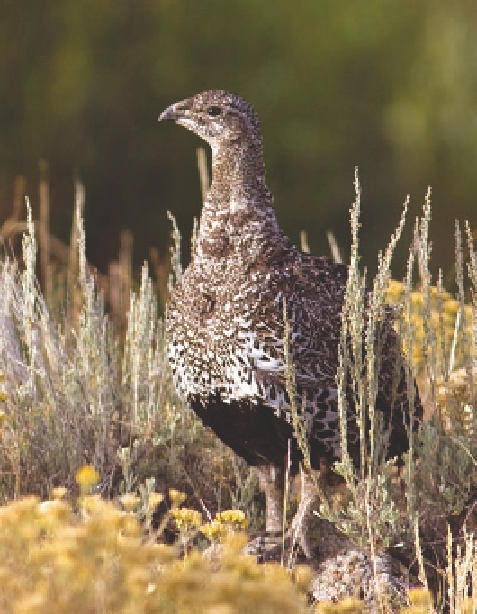Geoscience Reference
In-Depth Information
Fig. 7.17. Male (left) and female (right) greater sage-grouse.
the male is strutting on his lek in early spring. Because of
habitat fragmentation and other factors, the abundance of
this bird has been declining throughout the West during the
past 20 years. in 2012 about 38 percent of the birds lived in
Wyoming. Photos by Mark Gocke.
of courtship. the birds also avoid leks that have been
compromised by the noise of traffic and drilling.
97
conservation biologists and some land managers
have now taken steps where possible to conserve or
improve sage-grouse habitat. the leks are protected
from disturbances associated with new wells, wind
farms, and other developments, and also by keep-
ing nearby traffic to a minimum during the breed-
ing season. Keeping tall structures to a minimum is
important, as they provide perches for predatory rap-
that avoid critical habitat; the burning of sagebrush
occur historically, probably with minimal effects on
the sagebrush-dependent animals, but with current
levels of habitat loss and fragmentation, such events
can have significant adverse effects in many areas.
Unfortunately, as discussed previously, fire manage-
ment has been confounded by the invasion of cheat-
grass, which increases fire frequency.
to further improve sage-grouse habitat, new ap-
proaches to livestock grazing are being considered,
with the goal of maintaining adequate grass and forb
cover under the shrubs. this was less of a concern when
sage-grouse were more abundant and large expanses of
sagebrush steppe without industrial development still
existed. Using small radiotransmitters attached to birds,
habitat biologists have found that hens in relatively dry
areas select sagebrush communities with more grass
cover and litter for nesting and raising their broods.
Research is under way to determine whether thinning
the old shrubs mechanically leads to an increase in
nesting habitat as well as the establishment of young
sagebrush.
100
But habitat degradation and road traffic are not the
only factors in play that cause population declines.
Sage-grouse are susceptible to the exotic West nile
virus, which causes lethal encephalitis in the birds.
transmitted by mosquitos, this disease was first iden-
tified as a contributing cause of sage-grouse decline in


Search WWH ::

Custom Search